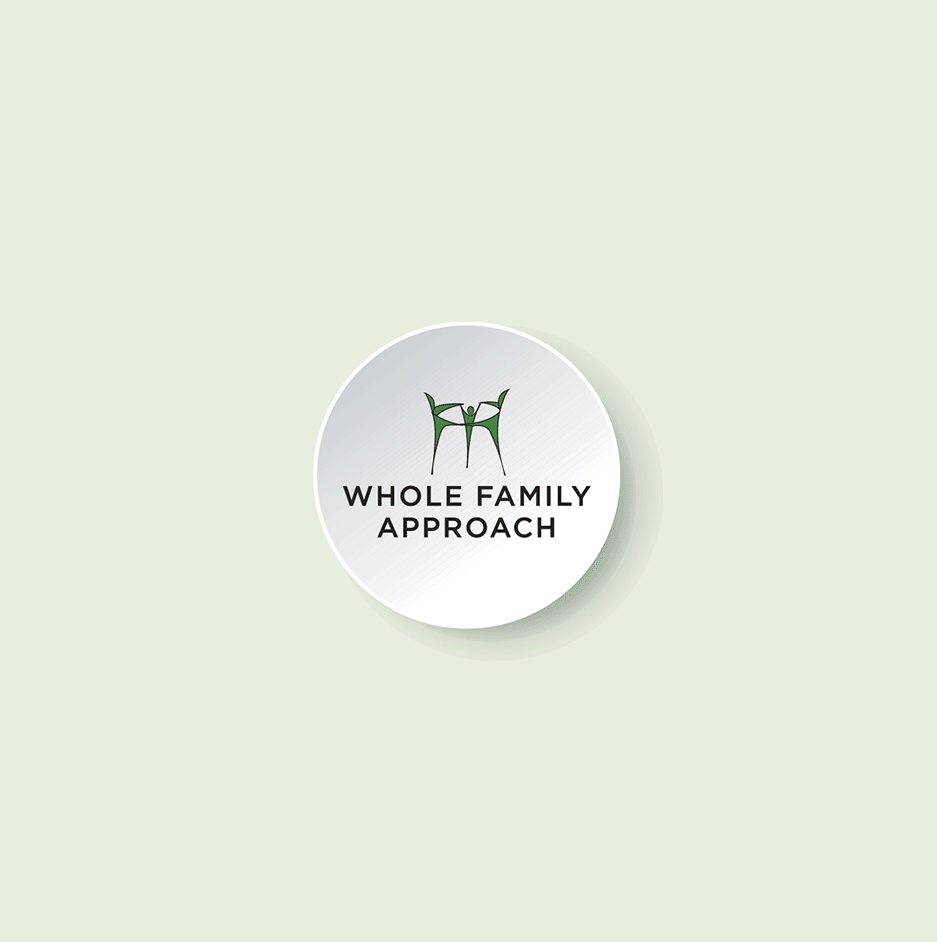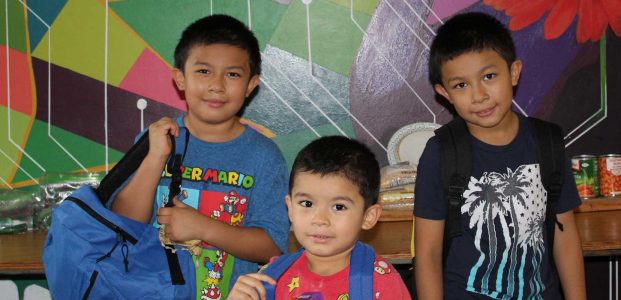Why use the Whole Family Approach?
Although families are made up of individuals, each member’s challenges and successes are interdependent. The Whole Family Approach is a family-led strategy which provides adults and children with the tools to set, plan for, and achieve their goals together. When the whole family works together to support each other’s goals, long-term change, stability and well-being become a reality.
The Whole Family Approach is preventive rather than crisis-driven. Ensuring a family has access to the tools to reach their goals and stay out of poverty has far better long-term benefits than intervening once they are already in poverty.
How is the Whole Family Approach Implemented?
There are four components that are critical to the successful implementation of the Whole Family Approach:
- Two dependable adult caregivers must be actively engaged with the children in the family. At least one must be working or able to work.
- Families must develop plans with long- and short-term goals.
- A team of agencies must partner with family to reach their goals.
- Collaborating agencies must meet regularly to collectively manage family plans, share data, and synchronize efforts.

Where does the Whole Family Approach Work?
The Whole Family Approach is effective in a range of settings — rural, urban, and suburban — and enables families to work together in realizing any number of goals ranging from education, to financial stability, health, and relationship building.
The Whole Family Approach is best implemented through a mission-driven collaborative model where multiple agencies come together to provide services. Learn how the grantees of the Pascale Sykes Foundation have successfully implemented this Approach here.
-
What does it mean to support whole people within whole families?
Individuals are multi-faceted and should be considered holistically. Relationships with finance, health, education, and community are often intertwined within individuals and their families.
-
Why is it important to have at least two consistent, responsible caregivers in each family practicing the Whole Family Approach to improve child well-being?
Being connected to a community (social supports or social capital) is vital to individuals’ wellness. The beginning of building a sustaining community is two connected adults supporting each other as they focus on a common goal: the child’s well-being.
A core component of the Whole Family Approach is ensuring that all participating families include two adult caregivers. These two adults may include a combination of parents, grandparents, grown children, other relatives, or close family friends. Ideally, at least one of the caretakers must be employed or able to work.
When the whole family supports each other’s goals, long-term change and stability become a reality.
-
Why is it important to have family plans?
The Whole Family Approach supports the belief that families themselves know where they want to be. By using an approach where the families are in the driver’s seat identifying their desired outcomes, practitioners of the Whole Family Approach support the family in developing a plan to reach their goals.
-
What is meant by informal supports?
Informal support is defined as support provided by families, friends, community, churches, etc. that happen outside of formal settings such as government, institutional, professional, or social service support. This kind of informal support is often vital for families to reach their goals.
-
What happens if family caregivers identify a family goal that their Whole Family Approach practitioner does not believe should be a priority?
Families know what they want in life. The Whole Family Approach allows for families to determine what is best for their well-being. The role of Whole Family Approach practitioners is to cooperate with families in achieving their goals.
-
Why is it important that family plans be long range?
Each individual and family will achieve their goals at a different pace. For some, it is a two-steps-forward, one-step-back process. It is important to continuously encourage families to keep working toward their goals and adjust their plans when needed along the way.
Once a family or individual achieves all their goals, they enter the maintenance phase. In this phase, the Whole Family Approach practitioner should check in with the family on a quarterly basis or as needed by the family to see if they are maintaining their goals. This might be in person or over the phone.
During the maintenance phase, the practitioner can also talk to families about what goals they may
be interested in setting up in the future. -
Why should Whole Family Approach practitioners “dig for roots”?
Find root causes. Families come with problems or roadblocks to moving ahead. Fixing the presenting problem may produce quick results, but dealing with the reason for the problem will produce long lasting results.
-
What is the difference between a collaboration and a single agency effort to implement the Whole Family Approach?
The collaborative model creates a shared mission and provides shared data, which enables seamless collaboration among multiple organizations to holistically support a family. The single agency approach is when one agency takes responsibility for providing all services to a family.
-
Why is sharing data an important aspect of the Whole Family Approach?
When collaborating agencies share a data reporting system, it allows coaches and service providers to easily update and share progress data for each family. This enables the collaborative members to adapt to the families’ progress, creating a responsive rather than reactive system.
-
Does sharing data break confidentiality with families?
It is important that all engaged partners, agencies, and family members, agree to clauses of confidentiality. When a family goes through the intake process, both family adults must be aware that data will be shared with professionals and sign a brief agreement.
-
How do we know the Whole Family Approach works?
Preliminary findings from research being carried out by the Walter Rand Institute for Public Affairs at Rutgers University show the following impact:
- The first adult caregiver reported a significant improvement in children’s educational outcomes and experiences.
- The second adult caregiver reported significantly reduced financial challenges and stress.
- Both caregivers saw a significant increase in the help given and received in their relationship.
In addition, a study done by The University of Pennsylvania School of Social Policy and Practice supports preliminary findings that:
- Young people are expressing increased optimism and a sense of agency about their future.
- Relationships between parents and children are improving.
- Adult mental health is improving.
- Parents, especially women, feel more confident in their ability to effectively manage money.
Research with the Walter Rand Institute and Drive: Evaluation Partners is ongoing. Results are slated to be available in early 2022.


